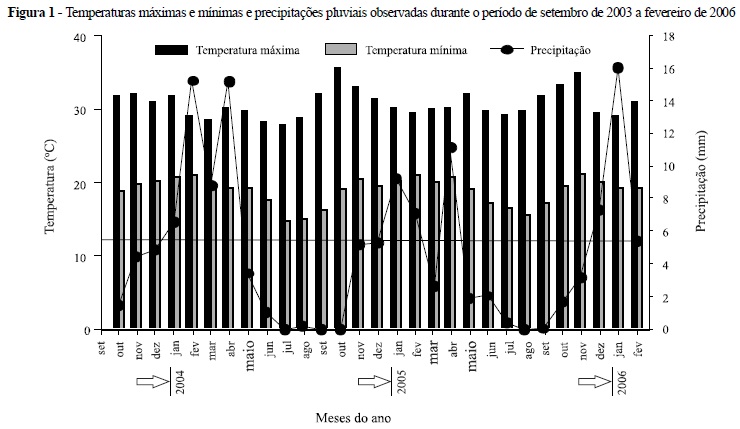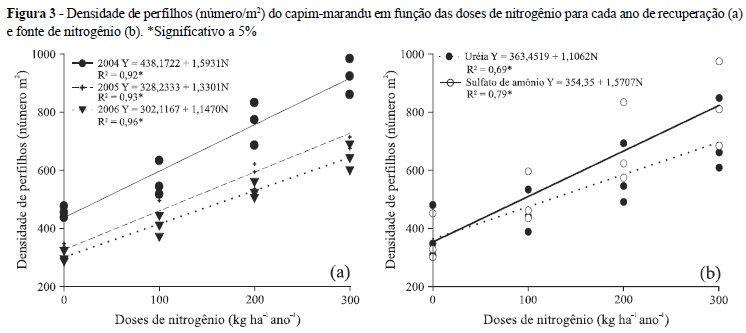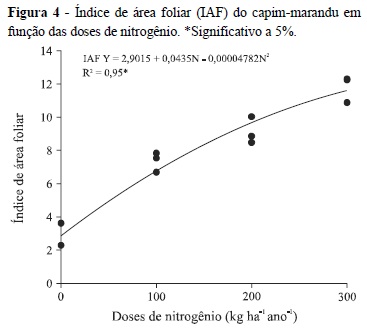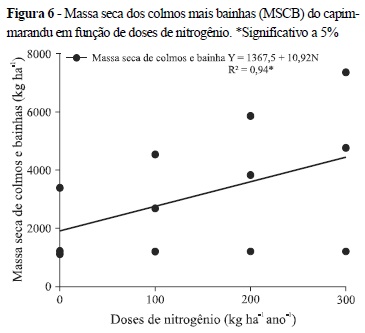To replenish soil fertility is one of the ways of recovering the productive capacity of degraded pasture. Nitrogen fertilisation is fundamental to increasing forage production, especially when it comes to the recovery of pasture. With this in mind, the objective of this work was to evaluate the structural characteristics and dry matter (DM) accumulation of the leaf blades and sheathed stems of marandu-grass pasture at a moderate stage of degradation, for different dosages and sources of nitrogen, during a three-year period. The experiment was carried out from July, 2003 to March, 2006 at the Model Farm of the Goiás State University (UEG), over an area of 882 m² with plots of 20 m² and usable area of 6 m². The experimental design was of randomized blocks with three replications. The treatments in the plots were characterized by a 2 x 4 factorial, being two nitrogen sources (ammonium sulphate and urea) and four nitrogen dosages (0; 100; 200 and 300 kg ha-1 yr-1). For each sub-plot, treatments were represented by the years (2004, 2005 and 2006), as relating to the time of the recovery of the pasture. Nitrogen fertilization was divided into three applications, following each harvesting of the grass for forage evaluation. The results showed that nitrogen fertilisation influenced the structural characteristics and dry matter accumulation of marandu grass, and hence its recovery. The dosage of 300 kg ha-1 yr-1 of ammonium sulphate resulted in greater values for plant height, tiller density and leaf-blade dry matter.
Urochloa brizantha; Nitrogen Fertilisation; Ammonium Sulphate; Urea







